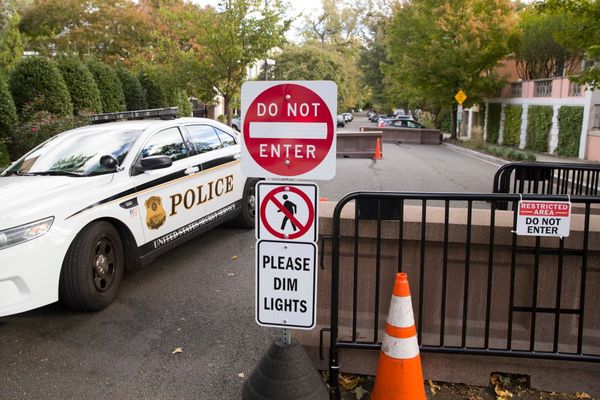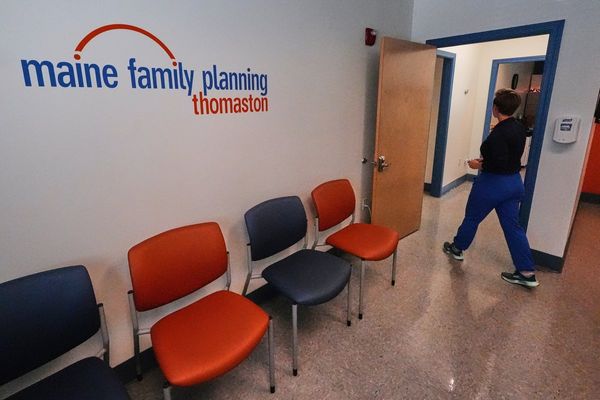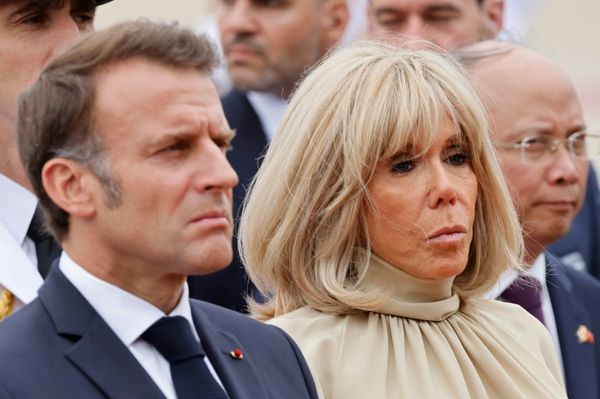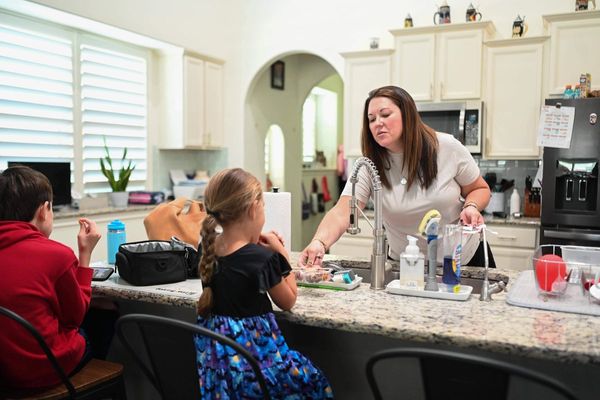
If we don't do it ourselves, we'll have it done to us, says mayor Ron Mark. Wairarapa, Greater Christchurch and Bay of Plenty are first in line for reorganisation talks.
Masterton, Carterton and South Wairarapa district council representatives have met to plan a new governance deal together, under the shadow of a proposed consolidation of all the country's local authorities.
The three mayors say they'll consider everything from shared services through to amalgamating into one big council – an initiative that's being welcomed by some local business leaders.
The government-commissioned Review into the Future for Local Government has recommended the country's 67 city and district councils and 11 regional councils be reorganised into 15 regional groupings, aligned with the boundaries of the reformed resource management regions.
READ MORE: * The government we elect will shape the councils that decide our rates * NZ’s tiniest council shows attack is the best defence against amalgamation
Carterton mayor Ron Mark says the writing's on the wall. "Every council in the country is vulnerable. Because history shows that when government has a mind to change, it just makes the decision, and people are lumped with it. I would rather do it myself than have it done to me."
From the famous lighthouse at Castlepoint down to Lake Ferry on Cook Strait, the three southern districts of the Wairarapa cover 6,000 square kilometres – that's bigger than the US state of Delaware.
But Delaware has a population of more than 1 million people; the combined population of the three Wairarapa districts is just 50,000, with vast swathes of rugged hill country good only for sheep farming, forestry or returning to native bush.
"I believe the Wairarapa is one. And we're best when we work as one. And the days of parochialism need to be put to bed." – Ron Mark, Carterton mayor
(Tararua District to the north, which is at the junction of Wairarapa, Manawatū and southern Hawke's Bay, is not taking part in the amalgamation talks at this stage).
This is not the first time the three southern Wairarapa districts have proposed amalgamation – Ron Mark pushed for it when he was previously Carterton mayor, from 2010 to 2014.
Back then, it was overshadowed by a Wellington Regional Council proposal to include Wairarapa in a Wellington super-city. In the end, neither proposal made it through the Local Government Commission.
But this time, it's given new momentum by the Future for Local Government Review, which reported back to the minister in June. The independent review panel recommended a reorganisation of local government to strengthen councils to plan for a more complex future.
It said councils should reorganise themselves into 15 groupings providing the infrastructure and services at present delivered by regional councils and territorial authorities – and some would be asked to consider their future.
Review chair Jim Palmer said if councils within a region couldn't find a solution, then decisions would need to be made on their behalf. "It's important local councils start those conversations in a measured way, probably as early as they reasonably can," he told Newsroom, "because they're seeking certainty as well".
It won't just be Wairarapa.
In an interview with Newsroom, Bay of Plenty Regional Council chair Doug Leeder has already warned that small councils like Kawerau would find it hard to manage increasingly complex challenges like renewing wastewater consents, collecting solid waste or upgrading roads, especially with tougher quality standards and greater input from iwi Māori.
It will be challenging, he says, and higher health and environment standards for water and waste mean it will be expensive for these small communities. "They need to understand that."
And in Canterbury, the Greater Christchurch Partnership – a coalition set up last year of local and regional government, Ngai Tahu mana whenua and government agencies like Waka Kotahi – is already providing a model for greater coordination and collaboration in infrastructure.
Christchurch mayor Phil Mauger says he's working increasingly closely with his counterparts in neighbouring Selwyn and Waimakariri. Christchurch City had already absorbed Banks Peninsula District in 2006.
"We are sort-of amalgamated now with the Greater Christchurch Partnership," he tells Newsroom. "We share ideas, and planners sometimes. It works well and I’m a great believer in if it ain’t broke don’t fix it. One day down the track it may become finalised but I’m in no rush.
He sees no urgency to formalise the structure. "We already work together on transport and stormwater and spatial planning," he says. "There is potential to go further, but not at the moment I believe."
Banks Peninsula and the creation of the Auckland SuperCity have been the only local body amalgamations this century – but Ron Mark reckons Wairarapa can change that.
Back in 2013, about 85 percent of locals supported the merger, he reckons. It's not clear whether that's still the case. The Three Waters debate has divided the public in many parts of the country; some see the efficiencies and cost-savings in consolidation; others are more protective than ever of local voice and their district councils.
Certainly, there's room for efficiencies of scale. This week, the Taxpayers' Union lobby group published its annual Ratepayers Report. That shows Carterton residents paying the highest rates in the country – $3,938 a year, on average, and another $354 to the Greater Wellington Regional Council. They're followed by Manawatū, Queenstown Lakes, Tauranga and then South Wairarapa, whose residents pay average rates of $3,474 a year.
By contrast, Aucklanders pay just $2,825 annual rates on average, and that includes all the services provided elsewhere by regional councils.
"You're looking at things like one single chief executive. A lot of the services could be looked at – animal services, parks and reserves , that sort of thing. I would be personally surprised if the benefits don't outweigh the minuses by some way." – Gary Caffell, Masterton mayor
Ron Mark defends the high rates paid by Carterton residents. "We're sitting on $15 million in reserves, we've only got 6 percent debt, we only had a 5.9 percent increase in the average rates this year – but looking at everything that the Government's pushing at us, looking at climate change, and the way that our roads are continually hammered, we can't sit back and assume that we can continue to survive.
He says: "It's clear to me that Wairarapa's not going to survive in its current form and structure. And it stands to reason that we need to understand what functions we're meant to be performing, after all of these reforms.
"We have to ask ourselves, does our current form fit those functions? Because one thing is quite clear, we certainly won't have the asset base that we once had, we won't have autonomy we once had, we won't have the breadth of discretion that we once had. Things are moving to a more centralised socialist viewpoint, disempowering our people.
"At the end of the day, the pessimists would say we're simply going to be left looking after the roads, the public toilets, the parks and the cemetery. And we may not have the revenue base or the ability to meet those functions."
Masterton's Gary Caffell, mayor of the biggest of the three councils, agrees something has to change. "We're using the word merger," he tells Newsroom. "Amalgamation just seems to be a dirty word in politics, these days."
"There is a whole range of opportunities for getting better value for our money, that don't automatically include amalgamations." – Martin Connelly, South Wairarapa mayor
The three deputy mayors are all on the new Wairarapa governance group, and briefed their mayors on this week's first meeting. "We need to get a detailed analysis of the pros and cons of different kinds of shared services or merger, and the cost-savings.
"You're looking at things like one single chief executive. A lot of the services could be looked at – animal services, parks and reserves , that sort of thing. I would be personally surprised if the benefits don't outweigh the minuses by some way."
He says Wairarapa people will do what they can to avoid being forcibly included in a Wellington super-city. "We're pretty keen to keep our own identity across the hill here and we believe that the economies of scale could be better if we just did it amongst ourselves.
"The sooner we get into the conversation, the better. Because if we can guide our own destiny, that would be the best way for us to go, rather than being told by somebody what we've got to do."
But in South Wairarapa, mayor Martin Connelly is more equivocal.
"The object from my point of view is to review governance arrangements across the three councils, and to identify opportunities for improvement," he says. "We're not setting out with with the aim of amalgamating anything. We're trying to look at, what are the problems that detract from better governance arrangements?
"It may well be that amalgamation is seen as the best solution. But one of the things that tends not to be given nearly the amount of thought, in my opinion, are things like shared services, combined services, joint contracting in some places – there is a whole range of opportunities for getting better value for our money, that don't automatically include amalgamations."
Quoting the Productivity Commission, he says size isn't necessarily a big factor in better local government. "Carterton is the place you pay the highest rates, and we're not a million miles behind. It's very difficult to see how you can combine two of the higher paying ratings unit and achieve a saving for anybody."
South Wairarapa District is already a member of the Wellington Water grouping – six councils that have created a single council-controlled organisation to run their drinking water and wastewater. And all of Wairarapa comes under the oversight of Greater Wellington Regional Council.
If the resource management reforms aren't repealed by National, they will consolidate Wairarapa into the same planning region as Wellington. And if the Three Waters reforms go through, the Wellington and Wairarapa councils will be in one entity.
So Ron Mark is sticking to his guns. He believes the councils will be forced to consolidate, just as they have been with the Three Waters reforms, so he's rather they do it on their own terms.
That's why he's pushed for the three councils to seize the moment, to take matters into their own hands.
"I believe the Wairarapa is one," Mark says. "And we're best when we work as one. And the days of parochialism need to be put to bed."







